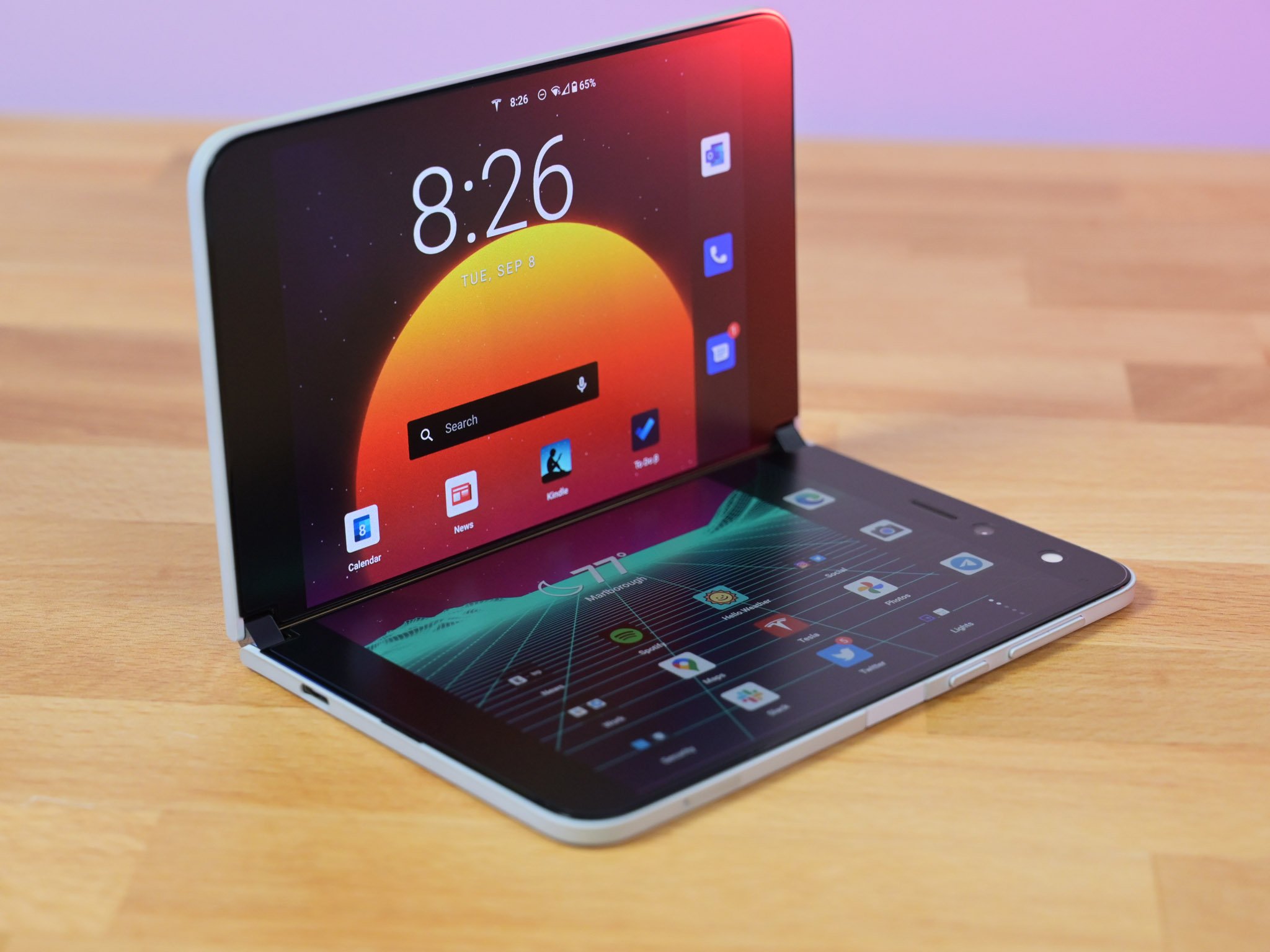Surface Duo expanding to new markets is bad? Why that's the dumbest thing I heard this week.
If you think Microsoft bringing Surface Duo to more commercial markets is a disappointment, you're overthinking things.

Microsoft this week announced Surface Laptop 4, along with some new office-orientated peripherals. Lost in some of that news is that its dual-screen mobile device — Surface Duo — is expanding to 9 more markets. Granted, these are commercial markets, so not retails stores, but it's still an important step.
But one of the dumbest hot takes I have seen from people is that Microsoft is only doing this to get rid of current stock. The joke being, of course, that Surface Duo is doing so poorly that the company is looking to dump existing devices in more markets to be rid of them.
While such a notion appeals to the professional Microsoft schadenfreude crowd, mostly because there are still some pathetic misplaced grievances about the demise of Windows Phone, it is one of the most idiotic things I have heard.
The real reason why Microsoft is expanding to Surface Duo is a lot more boring.
I mean, think about it. Imagine arguing that a product is going to more markets as a clear sign of failure.
Launching a phone — even as a soft launch through business channels — in a new country is not trivial. There are regulatory and approval processes, paperwork, general infrastructure, shipping, distribution, import concerns, support, and even adding new languages to Surface Duo (which happened just last week).
None of that is cheap or easy. And if you think I am wrong, then tell me why even Sony doesn't sell its niche phones in all markets.
The idea that Microsoft would product-dump Surface Duo in one new country to get rid of stock, let alone nine, is bizarre. If it were trying to do that, it would just do what it is already doing in the US — cutting prices. At just $950, seven months after launching, this US-only pricing is to sell more. And if Microsoft wanted to abandon it, they would do the old fire sale trick.
All the latest news, reviews, and guides for Windows and Xbox diehards.
Why launch in nine new markets at added cost and labor? It makes no sense.
Of course, if you're now waiting for me to take the other position, that this push to nine new markets is because Surface Duo is doing so well to warrant it, or is even selling better than expected, well, hell no. I have no idea how well Surface Duo is doing for sales, but if I hazard a guess, it's meager volume, and it certainly is not a 'hot' device for what are obvious reasons.
Trying to argue that a product is going to more markets as a clear sign of failure is, frankly, stupid.
No, the real reason why Microsoft is expanding Surface Duo to more markets is a lot more boring. There is no conspiracy, failing upwards, product dumping, or anything dramatic. Instead, Microsoft is paving the way for future releases of Surface Duo; your versions 2, 3, and beyond. By opening these channels today, Microsoft has an easier time for new hardware in the future. Lay the groundwork now so that later iterations can launch with shorter windows.
Microsoft also likely has multinational companies who want to trial Surface Duo, and they need an easier way to facilitate that process. Such a practice benefits Microsoft as it can also garner feedback on Surface Duo for later iterations (not unlike HoloLens 2 expansion).
Yes, that does mean we are still expecting a Surface Duo v2 in late 2021. As we have gone into exhaustive detail before, Surface Duo was conceived initially as a pocket Surface running a flavor of Windows. It was never supposed to be an Android phone, which is why things like NFC, 5G, or even smartphone-level cameras are not onboard. Android was a last-minute save of the hardware. A lot of that should change with the next version as the hardware team can now design it to meet the needs of phone users.
While I do not expect a global launch of a new Surface Duo for version 2, I think the US-only launch window will be much shorter. Microsoft can introduce the device in more markets precisely because of this slow but focused expansion. That means during the life cycle of version 2, we will see even more markets added in preparation for version 3. Rinse and repeat, and hopefully, by version 4, Surface Duo is some near-global launch like Surface Pro.
Or maybe it all comes crashing down, and Surface Duo fades away. I don't know.
None of this insight is particularly groundbreaking, but evidently, the apparent answer is lost on the internet's finest in comments and discussions because drama is fun. Hopefully, this will shed some light on a typical (albeit conservative) strategy for developing a new product line. You're welcome.

Daniel Rubino is the Editor-in-chief of Windows Central. He is also the head reviewer, podcast co-host, and analyst. He has been covering Microsoft since 2007 when this site was called WMExperts (and later Windows Phone Central). His interests include Windows, laptops, next-gen computing, and wearable tech. He has reviewed laptops for over 10 years and is particularly fond of 2-in-1 convertibles, Arm64 processors, new form factors, and thin-and-light PCs. Before all this tech stuff, he worked on a Ph.D. in linguistics, performed polysomnographs in NYC, and was a motion-picture operator for 17 years.
